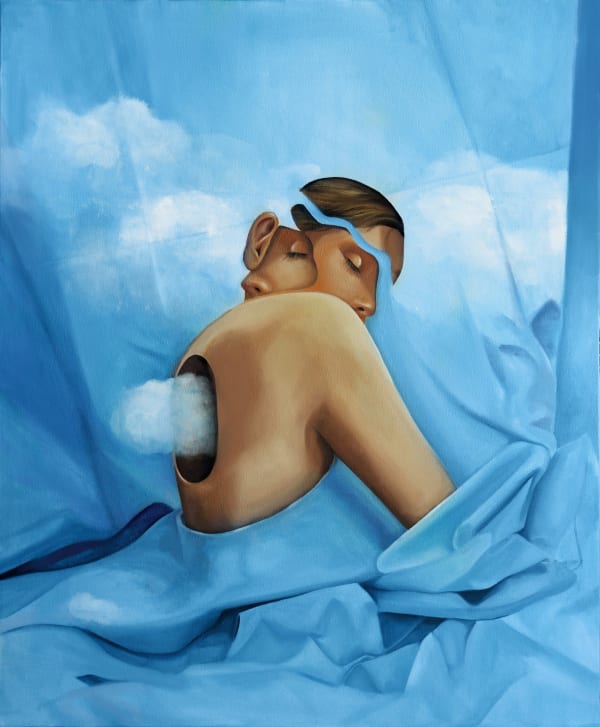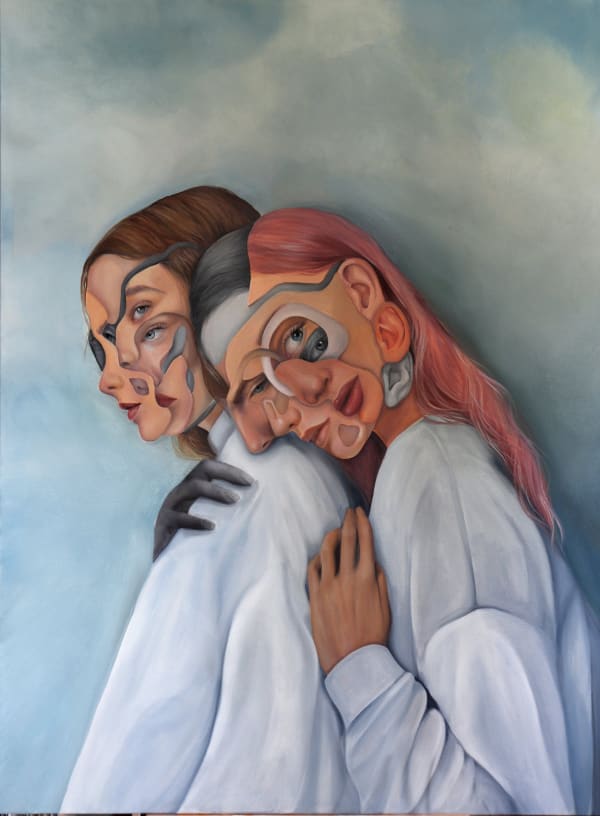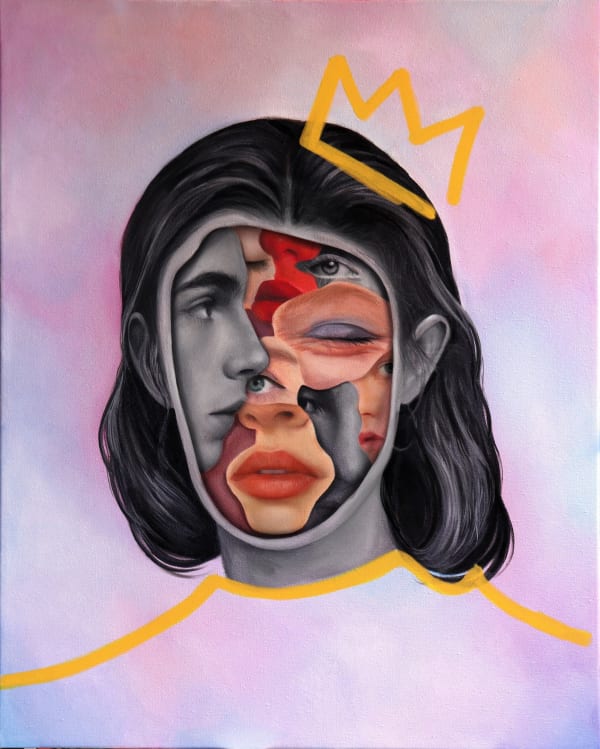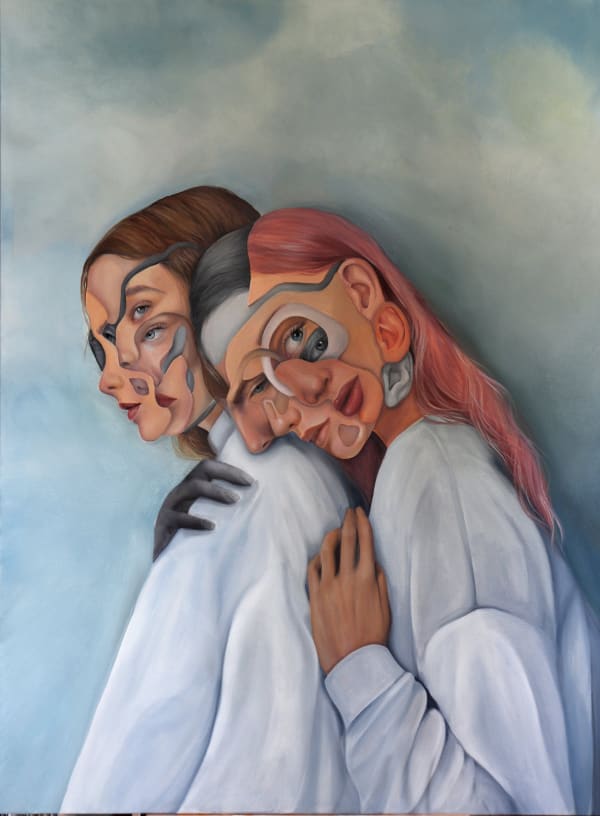Celia Gallego’s work resists narrative closure. Her fragmented portraits—disembodied eyes, isolated mouths, half-rendered faces—operate not as incomplete wholes but as meditations on the impossibility of totality, especially in representations of the self. In this way, her practice exists in deliberate tension with portraiture’s traditional aim: to define, to complete, to reveal. Instead, Gallego renders the visible as a site of interior excavation, where presence is shaped as much by what is withheld as what is shown.
Rooted in a distinctly feminist visual language, Gallego’s paintings are not simply depictions of women—they are encounters with the feminine psyche. Her subjects, often reduced to singular features, invite viewers into a psychological space that feels both intimate and elusive. The recurring focus on the eye is especially potent: it becomes less a tool for observation and more a symbol of interior surveillance, of the layered complexities in seeing and being seen. Her work does not offer the viewer a passive gaze—it demands reciprocity, an uncomfortable awareness of one’s own act of looking.
In series such as Corpus, exhibited at Espacio Cómplices, and her deeply affecting portraits shown at Whitelab Madrid, Gallego draws on surrealist aesthetics but filters them through an intensely personal and contemporary lens. Fragmentation becomes a mode of resistance—a refusal to perform wholeness in a cultural landscape that so often insists on legibility. By disrupting the body’s integrity, she allows for multiplicity: of meaning, identity, and emotion.
Gallego’s paintings speak most profoundly to a quiet, often private emotional terrain—shame, doubt, longing, self-interrogation. These are the psychological residues of navigating the world in a female body, rendered not through literal narrative but through gesture, color, and form. Her palette, at times clinical and at others dreamlike, creates a liminal atmosphere where softness and severity coexist. The effect is haunting: a face stares out at you, but you’re left unsure whether you’re witnessing recognition or retreat.
Beyond the canvas, Gallego extends her engagement with introspection through social media, where she frequently documents her process, setbacks, and inner monologue. In doing so, she collapses the binary between the artist as creator and the artist as subject. Vulnerability becomes not an afterthought but a core methodology.
Celia Gallego’s work challenges us to consider not just what a portrait shows, but what it conceals—what lies beneath the skin, behind the gaze, within the silence of a half-painted face. Hers is a visual language of psychological excavation, one that doesn’t just portray the feminine experience but inhabits it, fractures it, and invites us into its complexity.





